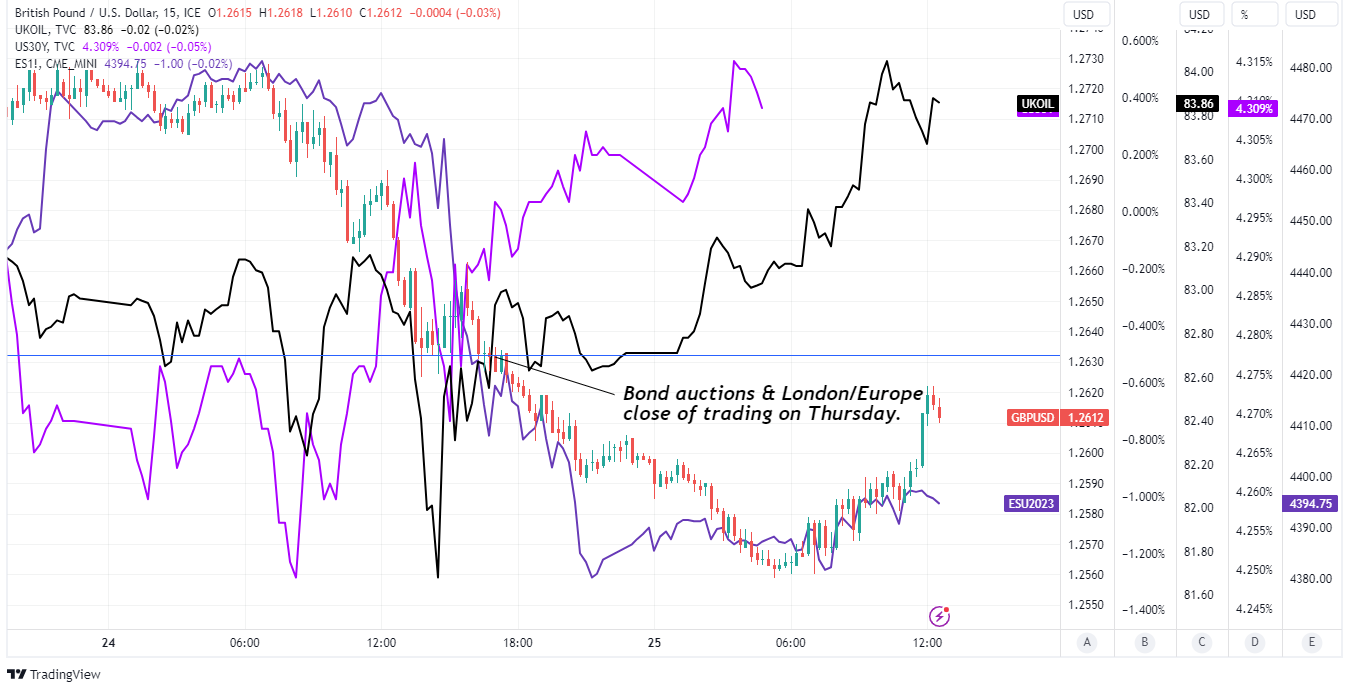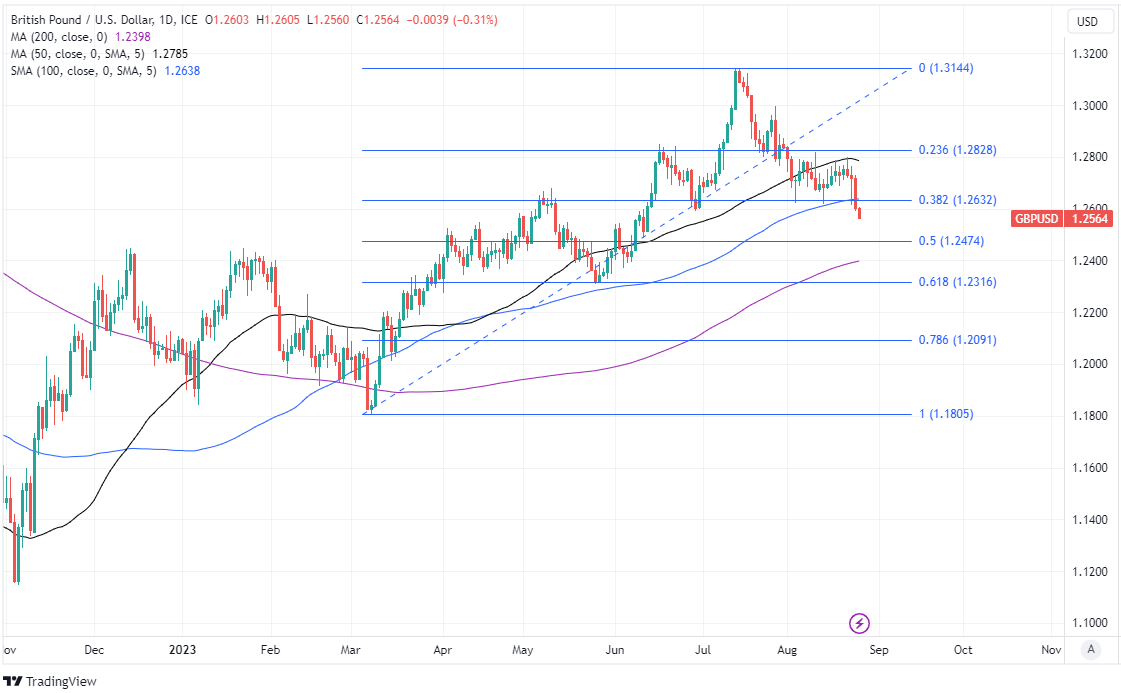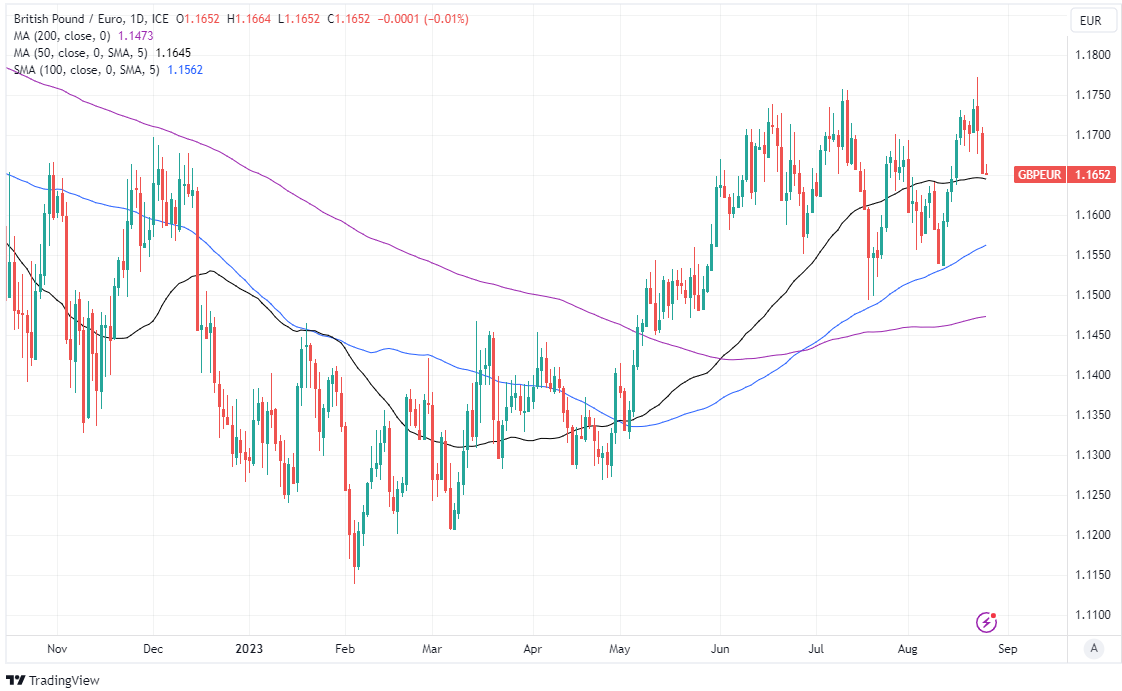Pound Sterling Below Major Support Vs Dollar but Supported by Euro
- Written by: James Skinner
-
"This week's business surveys suggest that the UK economy is continuing to lose momentum" - Oxford Economics.

Image © Adobe Images
The Pound was trading back beneath an important level of technical support against the Dollar and struggling to remain afloat relative to the Euro on Friday after global market risk appetite faltered amid as earlier rally in government bond yields furthered losses in Sterling.
Sterling fell below 1.26 against the Dollar for the first time since June on Thursday with losses deepening in Asia and persisting during European trade on Friday as financial markets were looking ahead to widely anticipated remarks from Federal Reserve (Fed) policymakers later in the session.
"The US dollar was buoyed by higher US interest rates and the DXY Index has traded above 104. The swaps market is pricing in a slightly more-than-even chance of another Fed hike by the November FOMC, and this probability has been climbing incrementally through the week," says Alvin Tan, head of Asia FX strategy at RBC Capital Markets.
"There are news reports that the PBOC has asked some local banks to reduce their outward bond investments through the Bond Connect channel, in another sign of stepped-up measures to defend the renminbi," he adds in a Friday market commentary.
The Pound had remained well supported between 1.26 and roughly 1.2632 since early June but the level gave way between the close of trading in London and New York on Thursday.

Above: Pound to Dollar rate shown at 5-minute intervals alongside S&P 500 stock index (blue), crude oil price and 30-year U.S. government bond yield.
Pound to Dollar losses deepened in between auctions of U.S. Treasury bills and a larger sale of 30-year inflation-linked bonds taking place late in the European trading session.
This added to new and expected supply coming to market with the Treasury seeking to rebuild and bolster cash balances previously drained during the lead-up to and process of raising the statutory U.S. government debt limit in April.
"Bond risk premia have noticeably risen this month, fueling a bear steepening episode in US yields," says Praveen Korapaty, chief interest rate strategist at Goldman Sachs.
"Our estimates of the impact of supply on yields are both smaller and more gradual than many investors fear. The overall upward trajectory for the stock of debt should raise 10y yields by about 40-80bp over time, all else equal, and near term repricing over the next few years is likely to be about half those levels," he and colleagues wrote previously.
Demand for U.S. bonds was stronger than in prior auctions but came at the cost of higher yields and amid mixed messages from Fed officials relating to the interest rate outlook.

Above: Pound to Dollar rate shown at daily intervals with selected moving averages and Fibonacci retracements of March rally indicating possible areas of technical support.
"The FOMC’s official position is that further rate hikes “may” be necessary, but that it is now data-dependent and it will make decisions on a meeting-by-meeting basis," says Ian Shepherdson, chief economist at Pantheon Macroeconomics. "We see no reason to think that Mr. Powell is ready now to give up that clear optionality."
For its own part, however, Sterling had already come under pressure previously after the Confederation of British Industry (CBI) said that sales and employment levels were likely to have fallen among large UK retailers during August.
Thursday's losses added to declines seen on Wednesday when S&P Global PMI surveys warned of recessionary conditions in the manufacturing and services industries, which have struggled with increased costs and lower consumer demand in parts.
"This week's business surveys suggest that the UK economy is continuing to lose momentum, with the composite PMI's sharp fall into contractionary territory particularly concerning," says Andrew Goodwin, chief UK economist at Oxford Economics.
Such surveys have been known to overstate the ups and downs of the economic cycle, however, while some consumers will be helped from October when more of this year's decline of wholesale energy prices is made available to households through the government price cap scheme.

Above: Pound to Euro rate shown at daily intervals with selected moving averages and Fibonacci retracements of March rally indicating possible areas of technical support.







